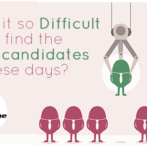Raise your hand if you enjoy reviewing and screening resumes. Keep your hand up if you believe that you are good at it. This means that a high percentage of people you select from the resumes actually meet your expectations in your interviews. If your hand is still up, congratulations! There is no need for you to continue reading this article. Please feel free to forward it to your less fortunate friends and acquaintances who need some help.
For those of you who put your hand down and acknowledged that you either dislike reviewing resumes, find that it difficult to do well or both, this article was written for you. I will address the two challenges above separately.
You dislike reviewing and screening resumes:
If you fall into this group, there are three options:
- Do it yourself and find a way to make it less painful, more efficient and more effective
- Delegate it to a trusted subordinate or coworker
- Use an outside advisor or service that you trust
Let’s cover these three options in further detail:
Do it yourself and find a way to make it less painful, more efficient and more effective
Realistically, there may be times where this is your reality. Here’s a few helpful practices to make your life easier:
- If you have an applicant tracking system, great. This helps. If the resume submittals go into an email account, put them in an email folder and keep those from different positions in different folders.
- Begin with the end in mind. Have a clear idea of what is truly required v.s. only a preference. A requirement generally means a person could not do this job without this characteristic. If your requirements are extremely difficult to find or you have too many of them reconsider your approach. You may end up searching for unicorns or purple squirrels. When is the last time you saw either of these?
- Set aside blocks of time where you can sit down and review a block of resumes at one time to establish some momentum. Starting and stopping can make things much more difficult. Some people prefer to turn off interruptions to stay focused and others like to listen to music, watch TV, etc. Know yourself and what works best for you.
- Create A, B and C categories or ratings of the resumes.
- A – just what I want. Contact these people first.
- B – Maybe yes or maybe no based on how many A resumes I see. These can also become important if your interviews with the A resume candidates don’t progress as hoped.
- C – definitely not what I am looking for. Move on.

Delegate it to a trusted subordinate or coworker
This can be a terrific option, especially when reviewing and screening resumes is not one of you great loves or talents. There are still some important guidelines so that you don’t miss out on great candidates or waste your time:
- Clearly communicate what you see as the requirements (must haves) v.s. preferences (nice to haves).
- Have your delegatee start with a small sample of the first 25-30 resumes that he/she has reviewed, screened and separated into the A, B and C categories. Then review these together and provide feedback. Make sure early on that you are on the same page with expectations.
- After you are on the same page, make sure to respond back to your delegatee promptly with feedback on the “A and B” screened resumes Few things will discourage engagement in this task then becoming silent after asking for help.
Use an outside advisor that you trust
If the above two options are not viable or are simply not providing the results you need, working with an external recruiting firm may be a good option. The guidelines for success are similar to delegating to a subordinate or coworker. The difference is that you should not need to manage their screening process of A, B and C categories of resumes. However, the need to communicate and provide prompt feedback still pertain.

You decided to review and screen the resumes and wish to become more effective
Hey, sometimes, you are the appropriate person to carry out this task. Great, how do you become more effective? Here are some principles that can help you improve:
- Reconsider your beliefs. It is very common for people to believe that they can determine a great deal about people from their resumes. Like palm reading and tarot cards, some people may be able to decipher a great deal about a person from this one piece of data. Most of us cannot. Here’s why. A resume is a marketing piece. Some are better at producing marketing pieces than others. Some received outside help and others did not. Some were more honest on their resumes than others. The real question is whether or not the resume is a good indicator of fit for the specific job you are hiring. It would be wise to consider the resume to be bits and pieces of information and not an extensive biography.
- Having made the above statement, let me state that the resume does provide some value. It is best to know where it is valuable and where it isn’t. Here are a few guidelines to allow the resumes to assist you and not deceive you:
- Interpret the resume through the lens of how it pertains to the specific job you are hiring. We all have our biases. I really like some things and dislike others. The problem is when these biases impair our effectiveness. For example, I may have a bias for a resume that is well-written and creative. If I am hiring a marketing person who will be writing creative ads, my bias may be appropriate. But, what if I am hiring an accountant or engineer? My preferred style of communication may have nothing to do with effectiveness in those jobs. For those jobs, I may want to look more for clear, concise, organized and accurate written communication. What if the job does not even involve writing but involves face-to-face verbal communication. How well will the resume indicate this skill?
- Focus more on the resume being a tool to eliminate the candidates who are not appropriate rather than to determine who is. Determine the appropriate “elimination factors”. Common examples of this would be: lacking key skills, experience or credentials, unstable job history, unfavorable geographical proximity, etc.
- Expand our options. It is usually more effective to have a larger pool of candidates than just considering “two or three best resumes”. For the reasons above, the best candidate for your job is often one of the people in the B (maybe) category.
- Create a brief screening step before inviting people in for interviews. Common examples include sending an email with specific questions that are relevant to the job which the candidate responds to and conducting a brief phone screen with specific questions that are important to determine fit.
In summary, the first step in the interview process usually begins with resumes. The key thing to be mindful of is how to navigate through this step efficiently and effectively. The end goal is to spend your time interviewing the appropriate candidates while not passing up high-potential candidates whose resume did not “wow you”.
About the Author
 Brad Wolff is Managing Director for JumpVine, an Atlanta-based recruitment firm whose science-based Hire2Retain approach results in a reduction in turnover from 46 percent to 10 percent over 18 months. It also reduces the number of interviews per hire by 50-75 percent. Wolff’s method measures whether people’s innate characteristics match a company’s open position and corporate culture.
Brad Wolff is Managing Director for JumpVine, an Atlanta-based recruitment firm whose science-based Hire2Retain approach results in a reduction in turnover from 46 percent to 10 percent over 18 months. It also reduces the number of interviews per hire by 50-75 percent. Wolff’s method measures whether people’s innate characteristics match a company’s open position and corporate culture.










